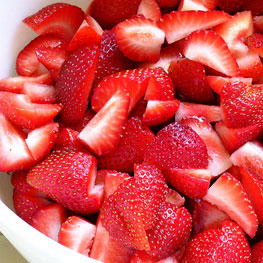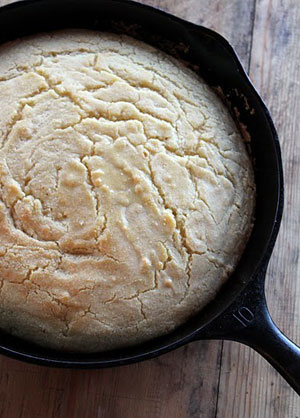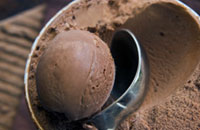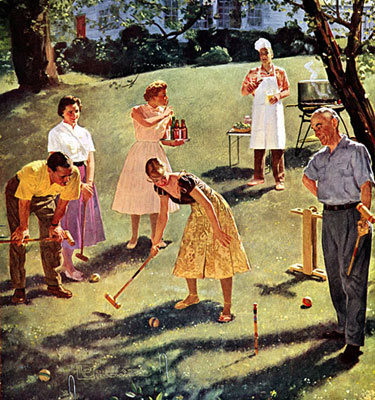 When I was a child, for two weeks every summer, my family would go to a small town in Norway called Fevik. We would stay in a hotel called the Strand Hotel, which is, now, a home for the elderly. We were a large family, four children, (I was the youngest), my mother, my Norwegian father, and his sister, Else.
When I was a child, for two weeks every summer, my family would go to a small town in Norway called Fevik. We would stay in a hotel called the Strand Hotel, which is, now, a home for the elderly. We were a large family, four children, (I was the youngest), my mother, my Norwegian father, and his sister, Else.
Our days were filled with expeditions that usually involved catching our lunch, by crabbing or trolling for mackerel which we would cook over a fire on a nearby island that was deserted, but for moss and heather.
I never understood why we couldn't stay at the hotel for lunch, like the other families. The explanation was always the same, it was too expensive and there were too many of us, something that I now fully understand.
Food, Family and Memory
Food, Family, and Memory
Reminiscent of Another Shortcake
 My Auntie Vera and Uncle Johnny lived in a small house on a large piece of property in a rural area near North Judson, Indiana. They were my dad’s aunt and uncle. Through my child eyes, they seemed old enough to be grandparents. They had no children of their own, though, so they loved spoiling me and my brother. My favorite time to visit them was during strawberry season. I knew I could look forward to Auntie Vera’s delicious strawberry shortcake.
My Auntie Vera and Uncle Johnny lived in a small house on a large piece of property in a rural area near North Judson, Indiana. They were my dad’s aunt and uncle. Through my child eyes, they seemed old enough to be grandparents. They had no children of their own, though, so they loved spoiling me and my brother. My favorite time to visit them was during strawberry season. I knew I could look forward to Auntie Vera’s delicious strawberry shortcake.
Before we arrived, she would pick the fresh, sweet berries from her large garden. After cleaning and slicing them, she would sprinkle them lightly with sugar and let them sit out on the kitchen counter until dessert time. Her homemade shortcakes would be cooling on a rack on the counter right beside the strawberries.
Kids Say The Darndest Things
 When I was 4 years old I was on Kids Say The Darndest Things with Art Linkletter. My folks told me the teacher in our Nursery School recommended me. When I think about the fact that I once called her ‘fatso’ just to try out the word, nothing personal, and she got so mad she locked me in a broom closet, I’m ever convinced of the altruism of teachers.
When I was 4 years old I was on Kids Say The Darndest Things with Art Linkletter. My folks told me the teacher in our Nursery School recommended me. When I think about the fact that I once called her ‘fatso’ just to try out the word, nothing personal, and she got so mad she locked me in a broom closet, I’m ever convinced of the altruism of teachers.
I told some outstanding whoppers to Art Linkletter and my lies are preserved in perpetuity on a 78 recording that was issued to each family along with a Tiny Tears doll for the girls. This thrilled me no end.
Cornbread – Mimi vs. Granddaddy
 My Mimi told me something quite hysterically funny and dramatically morbid a few years ago…”If I die before your grandfather, he will have to eat something. I’ve taught him how to make cornbread. That should sustain him in between the three months I die and he remarries.”
My Mimi told me something quite hysterically funny and dramatically morbid a few years ago…”If I die before your grandfather, he will have to eat something. I’ve taught him how to make cornbread. That should sustain him in between the three months I die and he remarries.”
Tears immediately streamed down my face at the humor and sadness that thought evoked. That is, however, a bit of my family’s humor in a nutshell… delightful and somewhat macabre running hand in hand. What has happened though is a rivalry between Mimi and Granddaddy as to who makes the better batch of cornbread. They both use the exact same ingredients, same iron skillet, and same kitchen and oven for baking, but there are slight differences I would like to address: first the title.
Since Granddaddy makes it himself, it is dubbed “Granddaddy’s World Famous Cornbread.” Mimi’s boasts simply as “Mimi’s Cornbread,” which I guess is the passive aggressive way of saying hers is best. Since everything she makes is wonderful, permitting Granddaddy to title his dish as such is totally apropos. Plus, that is Granddaddy’s personality – everything he or his children do, but especially anything his grandchildren take on, mind you, is the best, exceptional, or “world famous.” The feeling is completely mutual and reciprocating.
I’m proud of my grandparents and there’s never been a doubt they are of me or the rest of the brood. I think their only flaw is that they gave me deep roots and short wings, considering I live two doors down. The cycle continues. I digress.
The Empress of Ice Cream
 For most of my dad’s young
life, he lived above and worked at Felcher’s, his parents’ candy store/
neighborhood lunch counter, tucked between P and G's Bar and Grill and
Simpson's Hardware Store on Amsterdam Avenue between 73 and 74th
Streets. Christopher Morely, imagined the man of the future while
watching my dad as a tiny boy play in front of that store and
immortalized him in his novel Kitty Foyle.
For most of my dad’s young
life, he lived above and worked at Felcher’s, his parents’ candy store/
neighborhood lunch counter, tucked between P and G's Bar and Grill and
Simpson's Hardware Store on Amsterdam Avenue between 73 and 74th
Streets. Christopher Morely, imagined the man of the future while
watching my dad as a tiny boy play in front of that store and
immortalized him in his novel Kitty Foyle.
Throughout college and law school my dad scooped ice cream and served meals at this lunch counter, as his then girlfriend, my mother, perched herself on a stool out front, eating fudgicles and enticing much of the passing parade, including Frank Gifford and his pals, the other NY Giants. I can still see the scoop my father kept from Felcher’s with its well-worn wooden handle and the scored thumb press that pushed a slim metal band, which would release the perfect scoop every time.
More Articles ...
Welcome to the new One for the Table ...
Our Home Page will be different each time you arrive.
We're sure you'll find something to pique your interest...


